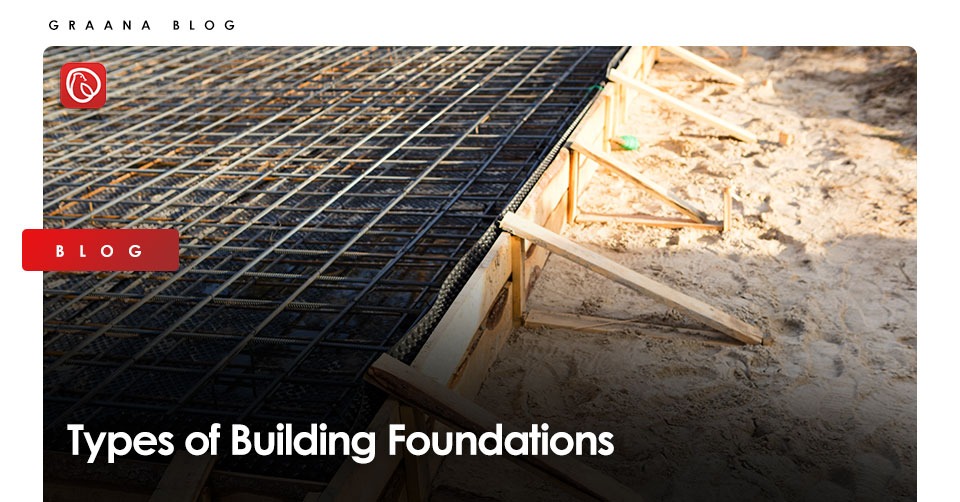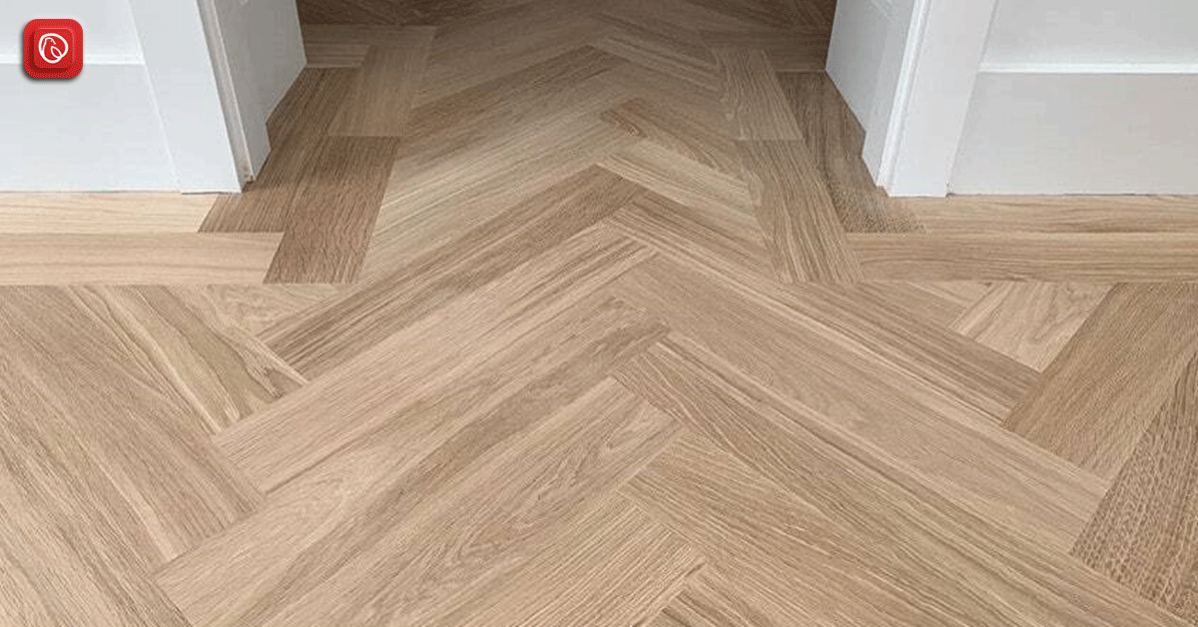Choosing the right foundation is one of the most important decisions when building single-family homes, skyscrapers, or superstructures. Any building’s foundation serves two purposes: it evenly distributes the weight and prevents any groundwater and moisture from seeping inside the structure.
The sort of foundation acceptable for your project will be determined by the topography, geology, and pedology (the study of soil) of your construction site, as well as the size and type of your building, among other criteria. Get to know how to improve bearing capacity of soil?
Graana.com, Pakistan’s smartest property portal, discusses the most prevalent types of foundations (and examples of each) below to help give an understanding of the benefits of each.
Different Types of Foundation
It is essential for geotechnical engineers to understand how different types of soil (and other materials) can affect the construction and structural integrity of buildings. In construction, there are two types of foundations: deep and shallow.
Deep Foundations
When building on sand or soft soil, which will not be able to bear the load of the building, deep foundations are required. A foundation must be built deep underground or even underwater, where it can touch the earth’s more robust layers.
For example, bridges, piers, and dams must lay foundations underwater while maintaining structural integrity.
A deep foundation is utilised to offer strength to massive structures or at construction sites where the soil is weak. These foundations are designed to shift the structure’s weight deep beneath the earth’s surface. They can be 60 to 200 feet (20 to 65 metres) deep.
The most common types are pile foundations and drilled shafts.
Pile Foundation
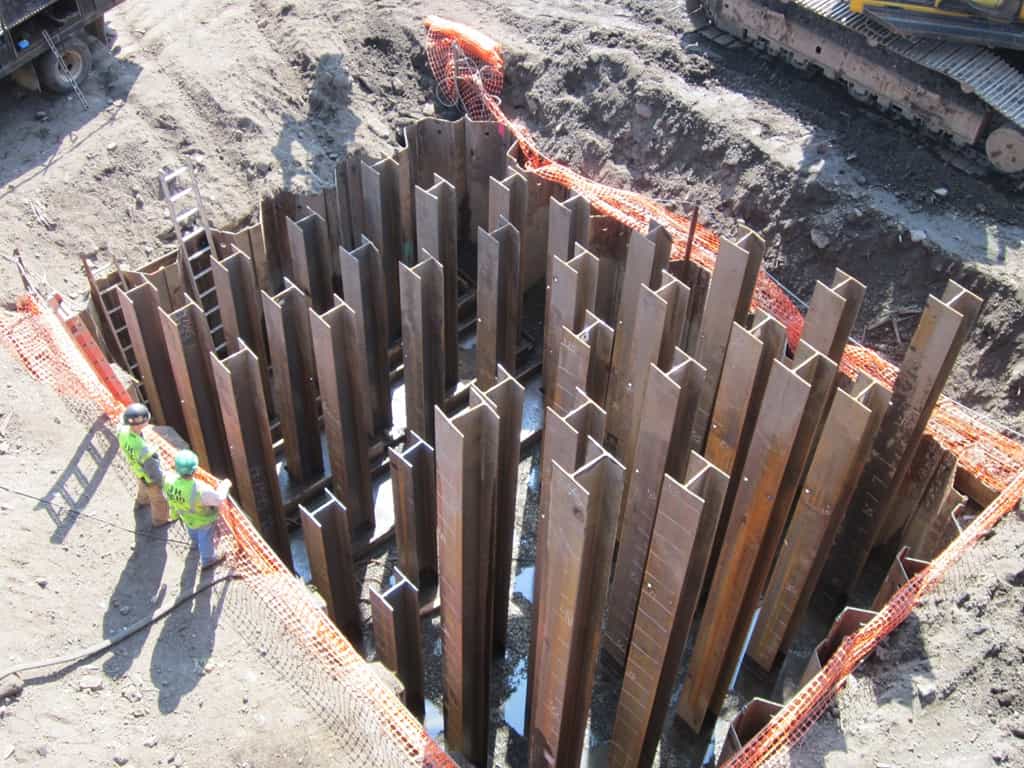
Pile foundations transfer heavy loads from structures to intricate soil layers below ground level, where shallow foundations, like spread footings and mat footings, are ineffective. They also keep the structure stable, steady and safe from lateral loads like earthquakes and strong winds.
Pile foundations are typically built in soil where the ground surface conditions are unsuitable for heavy loads. Hard rock strata can range in depth from 5 to 50 metres (15 to 150 feet) below ground level.
The skin friction (friction between a fluid and the surface of a building) and end bearing of the pile foundation resist the loads from the structure. Differential foundation settlement is also avoided by using pile foundations.
Drilled Shafts
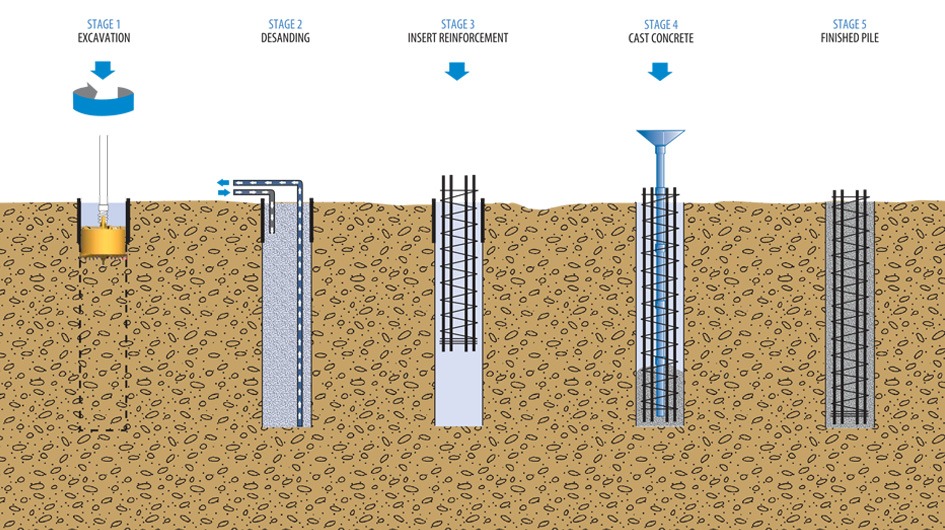
Drilled shafts, also known as caissons, are a type of deep foundation that work similarly to pile foundations but with a greater capacity to cast in position in the ground. It resists structural loads through shaft resistance, toe resistance, or a combination of the two. An auger is used in the construction of drilled shafts or caissons.
Drilled shafts can carry column loads that pile foundations cannot. It’s employed when the depth of hard strata beneath ground level is between 10 and 100 metres (25 feet to 300 feet).
Drilled shafts or caisson foundations are unsuitable in the case of deep layers of soft clays and loose, water-bearing granular soils. It is also incompatible with soils with difficult-to-stabilise cave formations, boulder-laden soils, and artesian aquifers.
Shallow Foundations
A shallow foundation is that which is wider than it is deep. Spread or open footings are other terms for shallow foundations.
Shallow foundations are the more cost-effective of the two types, plus they are the most prevalent because they do not necessitate extensive digging or boring into the earth.
Shallow foundations are preferred to support a large amount of weight at a shallow depth.
Open foundations are another term for shallow foundations. They are not only easier but also less expensive to construct. The following are the three most widely used open foundations:
- Individual Footing
- Strip Footing
- Mat Foundation
Individual Footing
The individual footing technique is employed when distinct columns carry a structure’s load. It is one of the most basic foundations used in building construction. The total weight is carefully calculated using a safe bearing capacity (SBC) method dependent on the soil strength. The load is evenly distributed over each column.
Strip Footing
The linear construction that this shallow foundation is built with prompted “strip footing.” It is designed to distribute the structure’s weight evenly throughout. Strip footing foundations are commonly utilised for load-bearing constructions due to their unique design and excellent structural integrity.
Mat Foundation
A mat foundation, also known as a raft foundation, is a shallow foundation that can be used to construct many basements or sublevels within a structure. These foundations work best in areas where the soil is poor. The structure’s weight is distributed across a significantly broader surface area with the help of these shallow foundations, increasing the building’s strength.
How to Decide Type of Building Foundations
Following is the selection criteria for building foundations:
Loads of Structure
One of the aspects that influences foundation selection is the structure’s weight load. The type of building, the type of construction material, environmental conditions, and seismic vulnerability all have an impact.
The foundation is influenced by the materials used in construction, such as bricks, stone, steel, and concrete. Another aspect that influences foundation selection is foundation settlement computation, which is linked to the structure’s loads.
Shallow foundations are preferred for low-rise buildings. On the other hand, deep foundations are required for high-rise buildings. A deep foundation is required because the ground gets extremely compacted at increasing depths.
Soil Types

Soil comes in various forms, including sandy, loose, clayey, and expansive soils. Topsoil extends from the surface to a depth of 3 metres, beneath which is the subsoil. The capacity of both the topsoil and subsoil layers determines the foundation selection to a large extent.
It would be best to choose a more robust and appropriate foundation in cases where the earth has strength bearing capacity. The bearing capacity of a soil refers to its ability to support structural loads without breaking the underlying soil.
Previously Used Soil
If the land has previously been utilised for residential, mining, industrial, or other structures, obstacles such as ground pollution may prevent immediate excavation. Such variables must be taken into account while choosing a foundation type.
If loose sand stretches to a great depth, raft foundations can be used to uniformly distribute the load, whereas pile foundations are needed for massive structures like multi-storey buildings.
Ease of Construction
The type of foundation should be decided after contemplating the ease with which it can be constructed at the site. The construction of various types of foundations necessitates workers with various skill sets and levels of expertise.
Economic Design
When there are several viable foundation options for a given project site, cost considerations may affect foundation selection. However, choosing a low-cost foundation should not compromise the foundation’s safety, construction, strength, or durability.
Extreme Weather and Natural Disasters
These characteristics should be chosen with these criteria in mind if the area has a history of catastrophic natural events or extreme weather conditions. Natural disasters and extreme weather data from the past should be used to guide foundation choices.
Adjoining Structure/Slopes/Water Bodies
When choosing a foundation type, adjacent structures, slopes, and water bodies are all factors to consider. When an adjacent structure’s foundation is very close to the foundation to be built, it may influence the adjoining structure’s decision and safety.
Choosing the right foundation type will be more complicated if the neighbouring structure is a high rise or an old property.
Proximity to a river, lake, natural drain, or slope should all be considered. Isolated Reinforced Cement Concrete (RCC) pad foundations under stilts are frequently preferred for construction on slopes. On slopes steeper than 25 degrees, no residential buildings should be built.
Water Table Level
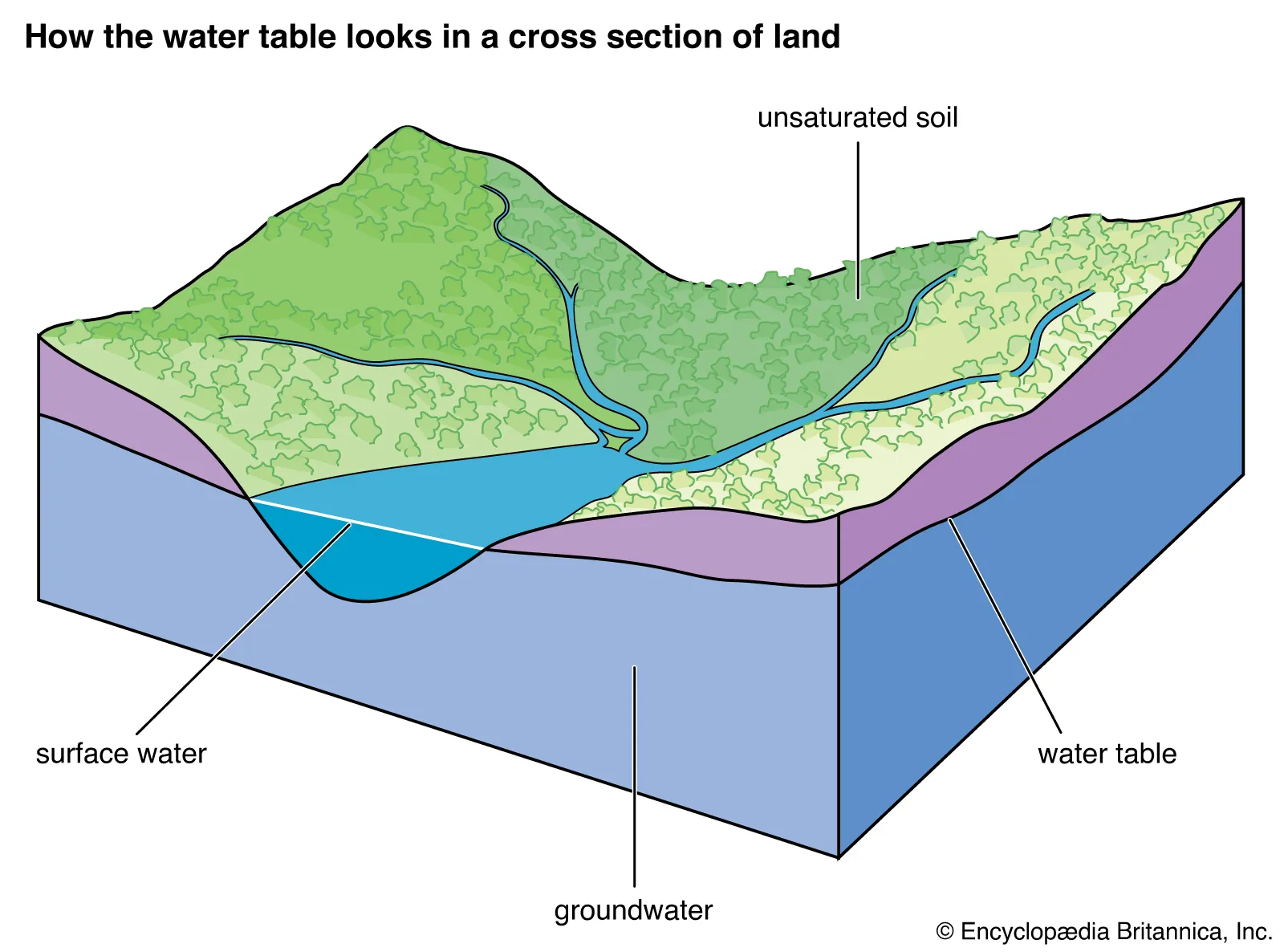
Another important factor that influences foundation choices is the water table. Due to water table changes, the foundation should not be built on soil that expands and contracts; it should be built on completely dry or moist soil.
A shallow footing, such as isolated or mixed, should be used if the groundwater table is below the foundation’s formation level. Furthermore, raft/mat footing is recommended for higher water tables.
To avoid any overturning moments during the early stages of construction, this is done to counterbalance uplift pressure and the effect of water. If this alternative is not feasible, deep foundations such as micro or drilled piles should be considered to provide the required uplift resistance.
For more information related to construction, visit our Graana Blog.
